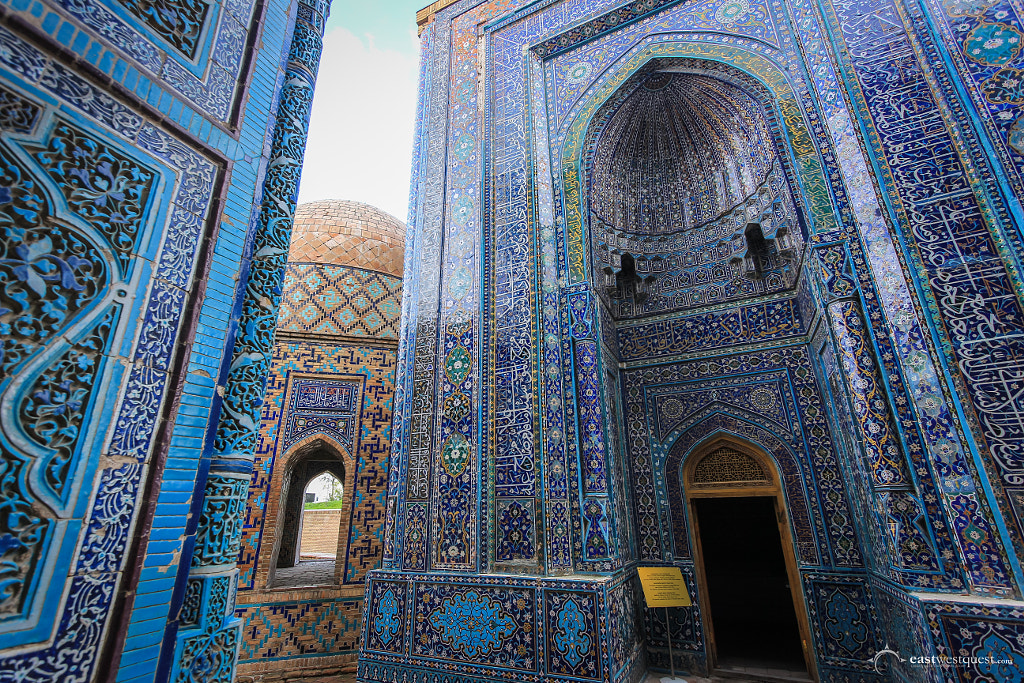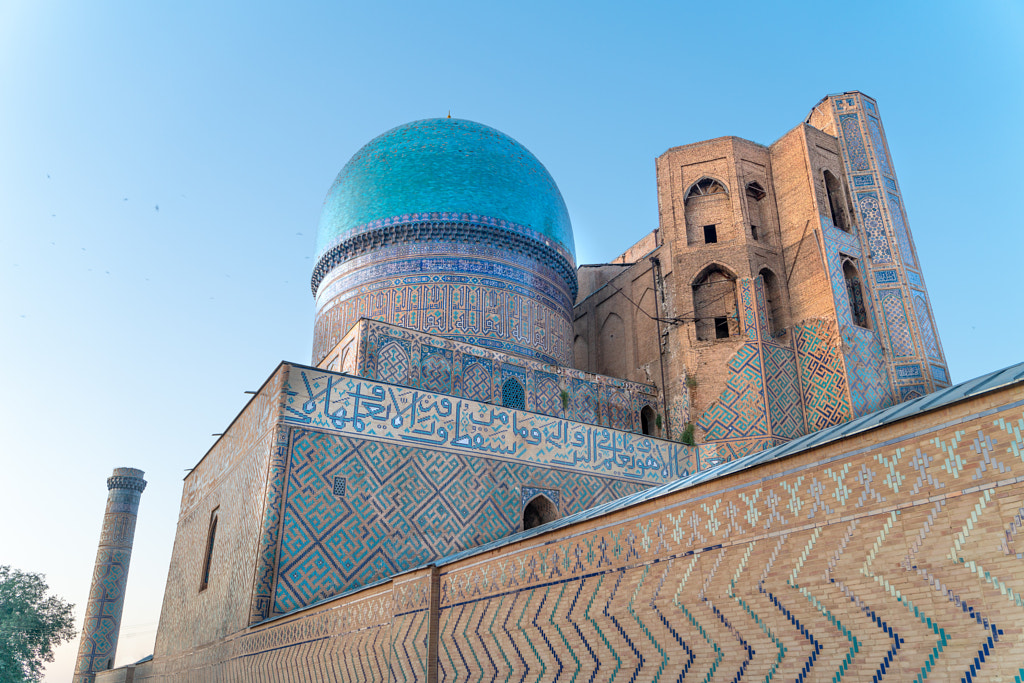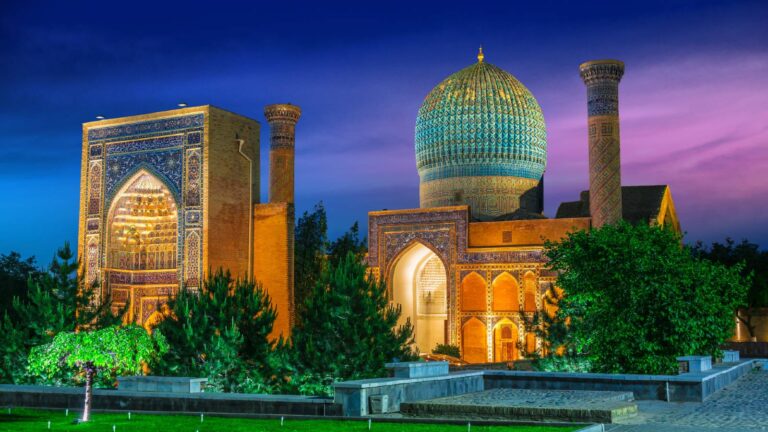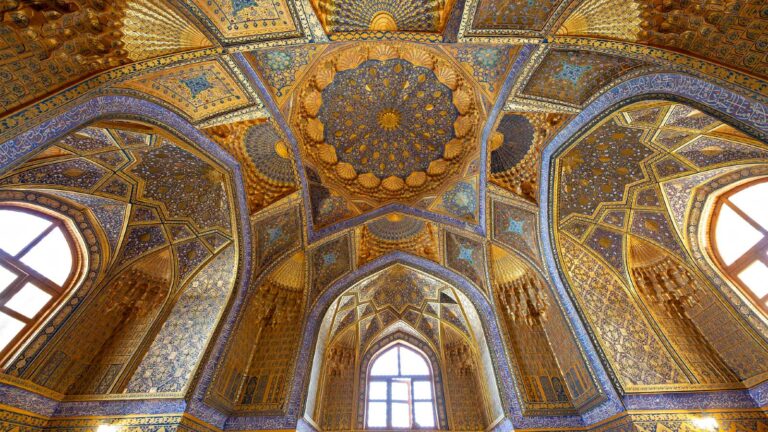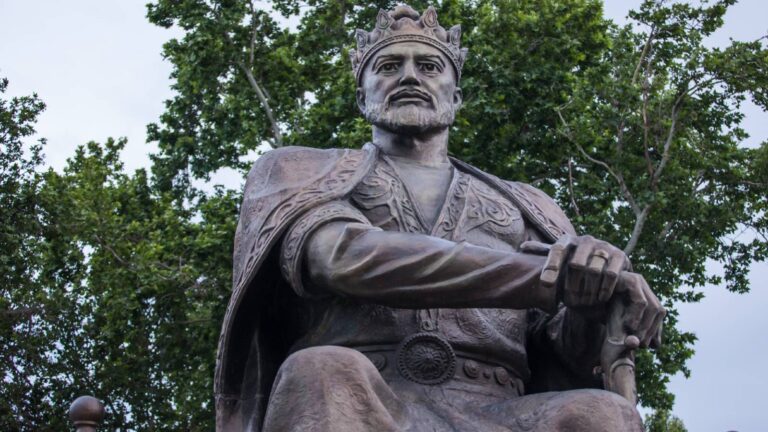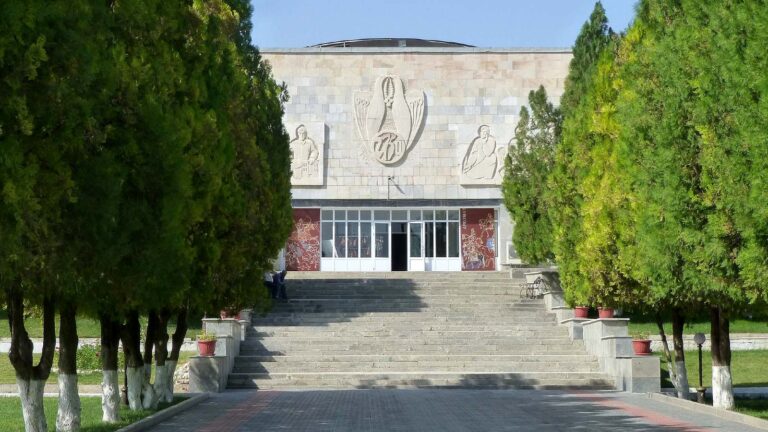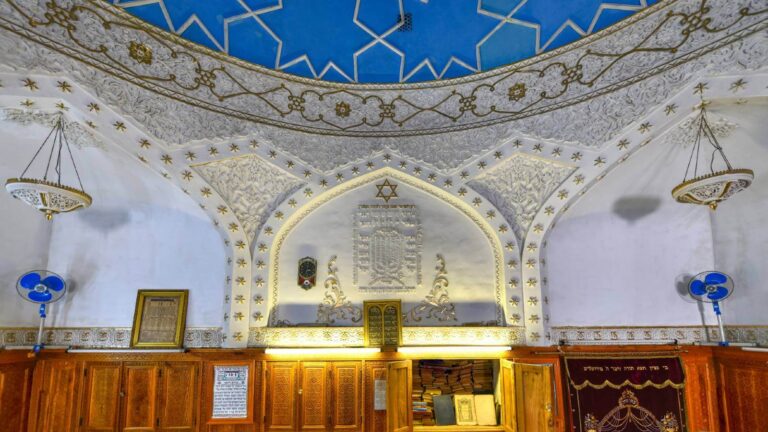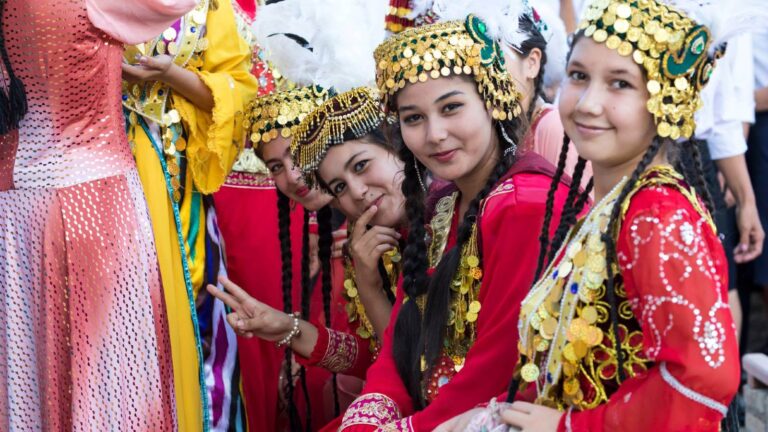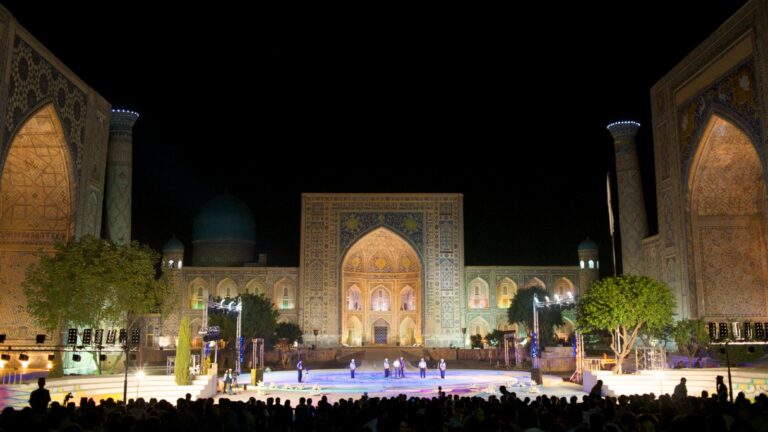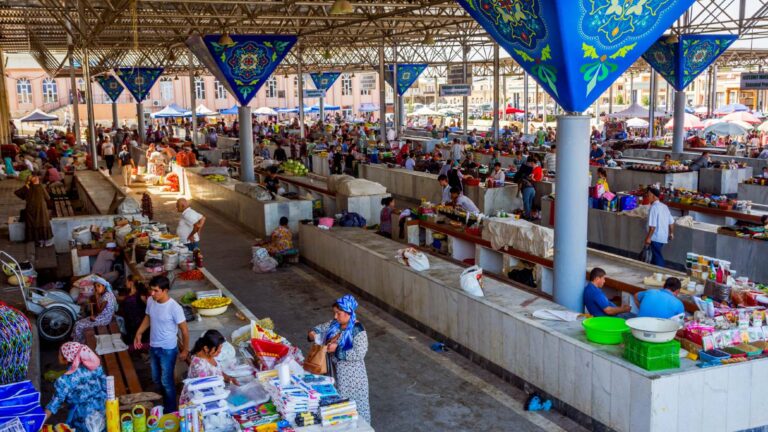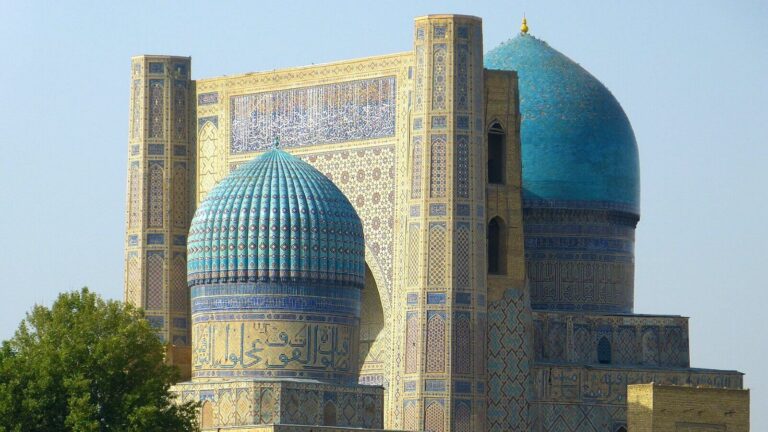Getting There
Buses, including lines 12, 71, 77, and 9, conveniently serve the complex.
What to Expect
The mysterious and unsurpassed archaeological and architectural memorial complex-the Shahi-Zinda necropolis – represents the harmony of a living composition reflecting the history of the 25th-century Samarkand.
The Shahi-Zindas complex is a majestic and picturesque masterpiece of architectural monuments of the Middle Ages, a cemetery street, as the locals call it, is located near the Bibi-Khanum Mosque on the slope of Afrosiab. The oldest ensemble includes 11 mausoleums, shimmering with a bright inflorescence of blue domes. The dilapidated buildings of mosques and mausoleums with the ashes of the highest nobility of Samarkand resting in them were built for hundreds of years.
The locals call this necropolis a “cemetery street”, but, of course, these majestic and monumental structures have nothing in common with the living dead who wander here, hunting mortals. Muslim saints, relatives of the famous ruler Timur, religious figures, thinkers and philosophers rest in local mausoleums created by the best architects of their time. There is such a huge number of buildings that are remarkable for their historical, aesthetic and cultural value that it may not take a whole hot day to see all these tombs and tombs.
History
The Shahi Zinda ensemble was founded by the Turkic Karakhanid dynasty and was further formed over the course of 9 centuries and includes more than twenty structures of the XI—XIV and XIX centuries. Until the XVI century, it was called Mazar Shah, meaning Qusam ibn Abbas. Since the XVI century, he became known as Shoh-i Zinda — “the living king”.
According to a late legend, the cousin of the Prophet Muhammad, Qusam ibn Abbas, came to Samarkand with a small army to establish Islam. During one of the pagan raids, Qusam ibn Abbas was struck by an arrow, but managed to hide from the eyes of the infidels in the resulting crevice (according to another version, in a well), where he lives to this day. Since in ancient times Arab graves were not decorated with colored tiles and paintings, it was necessary to decorate the room for pilgrims who arrived at the tomb of Kusam at a later time, and the wall painting resembles the decor of the rooms in the Art Nouveau and neo-Russian style.
The oldest buildings of the ensemble, from which only the foundations and tombstones have been preserved, date back to the era of the Turkic Karakhanid dynasty (XI—XII centuries). The vast majority of buildings belong to the Timurid era (XIV—XV centuries), and the reconstruction of the XVI—XIX centuries practically did not affect the composition and appearance of the complex. The mausoleums have a turquoise finish or are covered with dark blue tiles with floral ornaments.
Facilities Available
Hotels near the Shahi Zinda Memorial Complex are popular and in demand among tourists. Cheap accommodation facilities are ready to offer comfortable accommodation for a holiday or business trip. It is worth noting that guests can also book a room with a view of a landmark or an architectural monument. Hotels such as Rabat Boutique Hotel, Registry Hostel, Trip.LE Hostel Samarkand, Bibikhanum Hotel, Sultan Hotel and others are located near Registan Square.

